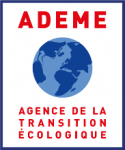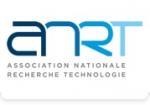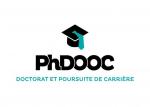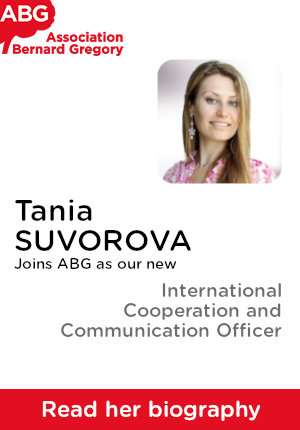COFUND PhD position - Ecotoxicology / Trophic Ecology, Parasitology
| ABG-133800 | Thesis topic | |
| 2025-10-13 | EU funding |

- Ecology, environment
Topic description
Title of the thesis project: Interactions between contaminants and parasitic helminths in coastal predators: insights from a declining population of common terns (ParaConT)
Scientific context
Understanding how stressors interact to affect wildlife is critical to mitigate the ongoing biodiversity crisis. Two very important stressors in this context are contaminants and parasites.
Human activities have increased the circulation of natural trace elements, and have produced a plethora of synthetic chemicals to which species have not previously been exposed. Several of these contaminants resist degradation and can biomagnify, i.e. their concentrations can increase at each step of the food web through trophic transfer. These contaminants have multiple toxic properties (endocrine disruption, immunosuppression, reprotoxicity, neurotoxicity), and can be especially harmful when associated with other stressors, such as extreme climatic events, disease, poor food availability or habitat loss.
Studying multiple stressors in the wild is challenging, and one particular threat has been somewhat overlooked: parasitism. Parasite infections are ubiquitous in nature, and act as powerful selective forces on host life histories. Helminths (i.e., trematodes, cestodes, acanthocephalans, and nematodes) are macroparasites that are mostly trophically transmitted to vertebrate hosts. Many helminth species are found in the internal organs of the host, where they can consume ingested food, host tissues, or host digestive products. Helminths compete with the host for nutrients, and trigger expensive behavioural and immune responses, which can result in a disruption of host metabolism, fertility and survival.
Contaminants and helminths not only have similar uptake routes and health effects, but also high potential to interact. Parasite transmission and multiplication have, for example, been found to be exacerbated in polluted environments, as a result of contaminant-related immunosuppression, and pollution effects on health have been shown to be worse in infected than in uninfected hosts. However, beneficial effects of helminths in polluted environments have also been described, possibly as a result of their contaminant accumulation capacity, which can decrease contaminant exposure to the host. As such, the interaction between contaminants and helminths could have positive and/or negative consequences for the host, depending on factors such as host and parasite species, parasite load and pathogenicity, contaminant type and concentration, and host health status. So far, studies in environmental parasitology, the science addressing multiple-stressor effects in host-parasite systems, have mostly focused on trace elements in freshwater fish, amphibians and invertebrate hosts, while studies in marine host-parasite systems, and especially on the contaminant accumulation capacity of helminths parasitising marine birds and mammals are still extremely rare.
Marine coastal environments are the final sinks of several natural and synthetic chemicals, which can persist years to centuries in food webs and coastal sediments. Long-lived marine predators such as coastal seabirds are thus particularly vulnerable to their bioaccumulation and toxic effects. Seabirds have been used widely as indicators of marine pollution, and are also exceptional, yet underused, models for studying helminths, many of which are yet to be described (85-95% of helminths parasitising vertebrates are still unknown). Factors underpinning the occurrence and characteristics of helminth infections in seabirds, as well as the trophic links between host and parasites, are poorly known. Additionally, interactions between contaminants and helminths have rarely been addressed in seabirds, even though they could affect populations.
General aim
The main aim of ParaConT is to quantify contaminant-helminth interactions and their drivers in a wild coastal seabird population breeding on the German North Sea coast – the common tern Sterna hirundo. Terns are particularly relevant to address the interactive drivers and effects of pollution and parasitism, because they feed at the interface between marine, freshwater and terrestrial habitats and perform intercontinental migrations. Terns can thus encounter, and disperse, contaminants and helminths of very diverse origins.
Helminth species will be extracted and identified from a large sample of terns of known sex, age, and life history, and dietary tracers (stable isotope analysis, SIA) and contaminants will be quantified in the tissues of both the helminths and the tern hosts to better understand nutrient and contaminant transfer. Seabirds are one of the most threatened groups of animals and the common tern is red-listed in Germany as critically endangered17, with outbreaks of avian influenza in the breeding seasons of 2022 and 2023 having exacerbated the situation. Unravelling the drivers and cumulative effects of pollution and parasitism is crucial to understand current and future threats to this declining species.
Scientific objectives and expected results
Thesis objective 1 – quantify and explain parasite and contaminant levels in common terns
Contaminant and helminth burdens in seabirds can be governed by intrinsic factors such as sex and age. Females have an additional elimination route for contaminants compared to males (egg transfer), and males may have a higher susceptibility to parasites than females through testosterone-induced immunosuppression. Age can drive differences in concentrations of trace elements such as mercury and cadmium in internal organs through long-term accumulation, and in the intensity of parasite infections, because young and senescent individuals tend to have weak immune systems. Extrinsic factors, such as diet, feeding habitat, and trophic level can also drive variation in both contaminant exposure and loads of trophically-derived parasites. If prey items are heavily contaminated and have high numbers of infective stages of parasites, co-exposure to the two stressors can take place, which needs to be accounted for to disentangle combined effects on host health.
To meet objective 1, the PhD student will quantify:
1) helminthic infections,
2) host tissue-specific distribution of two classes of contaminants (trace elements, per- and polyfluoroalkyl substances (PFAS)),
3) the most influential drivers of both contaminant and helminth burdens among intrinsic (age, sex, immune genotype) and extrinsic (migratory destinations, feeding habitat and trophic position) factors.
Predictions:
1) Given previous parasitological work in terns, we expect the birds to be infected with all major groups of helminths.
2) Host tissue distribution of contaminants depends on their physicochemical properties and on tissue- specific functions. We expect the liver to accumulate a large diversity of contaminants, while muscle or brain should concentrate a few predominant pollutants.
3a) Contaminant concentrations may increase with age in tissues such as liver, and differ between males and females, as it has been shown to be the case in blood18. Older and younger terns could also present higher burdens of helminths than mid-aged terns.
3b) Because higher variability in immune gene sequences has been associated with lower prevalence of blood parasites, we expect terns with a stronger variability of immune genotypes (inferred from major histocompatibility complex genes) to exhibit reduced prevalence and/or richness of helminths.
3c) Spatial behaviour and diet (inferred from geolocator data and SIA, respectively) are expected to be key drivers of between-individual variation in tissue contaminant concentrations and helminth richness.
Thesis objective 2 - quantify the transfer of contaminants and nutrients between parasites and tern hosts
All major helminth groups have been shown to bioaccumulate trace elements and some organochlorine compounds (synthetic chemicals). Arsenic, cadmium or lead can be found in helminths at concentrations hundreds of times higher than in their host tissues. In addition, infected hosts can have lower tissue concentrations than non-infected individuals because helminths can reduce host contaminant levels. Helminths can also modify host contaminant exposure and/or health through indirect mechanisms, such as disruption of host intestinal uptake of nutrients. However, helminth- contaminant interactions have been quantified almost exclusively in fish and amphibian hosts under controlled conditions, with very little work on other taxa or in the wild. In addition, the mechanisms by which helminths derive energy from the host are still elusive. Some helminths can feed on specific host tissues or consume partially digested or undigested gut content, i.e., nutrients that are not strictly host derived. Identifying nutrient uptake mechanisms of helminths and their trophic position is essential to understand how they could interfere with contaminant uptake and effects in the host.
To meet objective 2, and by using the same samples of objective 1, the PhD student will quantify:
1) the concentrations of two classes of contaminants (trace elements and PFAS) in helminth tissues,
2) dietary proxies in both host and helminth tissues,
3) whether infection with helminths affects contaminant distribution in host tissues.
Predictions:
1) Differences in contaminant concentrations are expected in helminths belonging to the different major groups (i.e., trematodes, cestodes, acanthocephalans, nematodes), as they have different morphologies affecting nutrient uptake strategies. Specifically, a greater diversity and quantity of contaminants are expected in the tissues of acanthocephalans and cestodes, because they absorb nutrients through their tegument by passive mechanisms, and lack a digestive tract.
2) The trophic level of acanthocephalans and cestodes is expected to be equal to, or lower than, that of the host, while nematodes and trematodes, which have a digestive track, could present a trophic position that is higher than (or similar to) the host if they feed on host tissues (or its prey).
3) Hosts with high parasite loads are expected to have lower contaminant concentrations than hosts with few or no helminths.
Scientific challenges and methods
A central challenge when studying helminth biology, but also contaminant distribution in internal organs of wild animals, is to have access to fresh carcasses of known cause of death, and information on individual traits. This project relies on a unique sample of 71 individually marked and pedigreed common terns that died of avian influenza at their breeding colony in 2022.
Study system
The common tern is a Holarctic colonially breeding and migratory seabird, usually laying a clutch of three eggs each year in late spring/early summer. At the Banter See in Wilhelmshaven, on the German North Sea coast (53°36 ́ N, 08°06 ́ E), UO/IAR has been monitoring a population of common terns on an individual basis following a standard protocol for 31 years. Since 1992, all locally hatched birds have been marked with a unique transponder shortly prior to fledging. The colony site is equipped with antennae that record the presence of all transponder-marked individuals on resting boxes and at the nest. During reproduction, nests are checked three times weekly to record reproductive parameters and mark chicks, which are sampled for feathers for molecular sex determination. Breeding adults are blood sampled to collect data on immune genotype and mercury contamination, and a subset is equipped with light-level geolocators to study migratory movements and behaviour.
In 2022 and 2023, the Banter See common tern population was heavily hit by avian influenza (H5N1): over two months of four-times-daily searches, 511 and 111 birds (26% and 9% of the overall population) were found freshly dead and stored in a freezer (-20°C) immediately upon discovery, their corpses being available for dissection and study. Seventyone of these birds were pedigreed, geolocator-tracked and blood sampled before the onset of influenza. As such, sex, age, migratory destination, immune genotype and blood mercury contamination are available for these individuals.
Helminthic infection characterisation
To identify helminth species, and thus quantify parasite richness, we will use morphological identification: observation under a light microscope Olympus BX51, and a stereomicroscope Olympus SZ51 equipped with a Moticam 2300, followed by comparison with the literature; but also, molecular identification: DNA barcoding through PCR using different primer sets to amplify a part of the internal transcribed spacer, cytochrome oxidase and the 18S region. We will also quantify parasite prevalence (proportion of the samples infected) and load (number of parasites per individual host).
Targeted contaminants: trace elements (natural origin) and perfluorinated compounds (PFAS, synthetic)
Trace elements. Trace elements such as mercury, cadmium and lead are nonessential, as they have no biological function and affect human and wildlife health1. Mercury is particularly concerning, because it is easily assimilated by organisms, accumulates in their tissues and strongly biomagnifies up food webs. Mercury exposure can increase the severity of seabird helminth infections, and affect seabird fecundity over the short and long-term. Trace elements such as manganese, selenium, and zinc, are essential (necessary for biological functions), and can have a protective role against other elements’ toxicity (e.g., selenium against mercury). Yet, essential elements can be toxic at high concentrations. Both essential and nonessential elements can be accumulated by helminths. Quantifying multiple trace elements is critical to get a mechanistic understanding of the interactions between contaminants and parasites.
PFAS. PFAS are emerging pollutants that are used extensively in a variety of consumer products (fire-
fighting foams, paints, coatings, textiles)29. PFAS are persistent, biomagnifying, globally distributed in the environment, and have strong immunosuppressive properties. PFAS accumulate in seabirds, with fish-eating species living near industrialized areas having among the highest concentrations. The work of the LRUniv supervisor has shown that PFAS were negatively related to helminth load in a coastal seabird. The high protein component of helminths, as well as strong PFAS affinity for proteins suggest a high potential for PFAS accumulation in helminths, which merits urgent investigation. Only three of the thousand PFAS in circulation are regulated internationally (Stockholm Convention). Evaluating exposure and effects of PFAS on wildlife, and their interaction with other stressors, is thus a pressing environmental priority.
Trace elements and PFAS will be quantified in tern brain, muscle, liver, kidney, gut, blood (extracted from the heart atria) and in helminths (whole body; individual worms of the same species and host will be pooled to increase available mass and thus contaminant detection probability) using methods developed by partner laboratories.
Dietary proxies
SIA has been widely applied in ecology to trace the source and flow of nutrients within food webs, by quantifying the ratios of heavy to light stable isotopes. Specifically, the carbon stable isotope ratio in total proteins (δ13C) varies with habitat in primary producers at the base of food webs (e.g., oceanic and coastal algae have different δ13C values), and is almost constant along the food web. In contrast, the nitrogen stable isotope ratio in total proteins (δ15N) has a stepwise enrichment from one trophic level to the next. Hence, δ13C and δ15N values in tissues of predators are time-integrated, individual-level proxies of feeding habitat and trophic position, respectively. Stable isotopes can also help characterise complex links in food webs, such as those of host-parasite systems, notably through compound-specific stable isotope analysis (CSIA), which applies SIA to specific molecules within tissues, i.e., amino acids. This enables us to trace host-parasite molecular exchanges, and reveal the specific energy source of parasites and the quantity of biomass transferred. SIA and CSIA will be carried out in host tissues with different temporal integrations (e.g., feathers for long-term dietary information, blood and liver for short-term), and in helminths (whole body; individual worms of the same species and host will be pooled), using methods developed by partner laboratories.
Statistical approach
Multivariate (principal component analysis, PCA) and univariate multifactorial analyses (i.e., (generalised) linear models, (G)LM) will be used to meet the objectives of ParaConT. Specifically, PCA will be used to explore inter-relationships between contaminants, and select those that explain most of the variation, to use in multifactorial models. GLMs allow to model response variables with different distributions (Gaussian, gamma, binomial) and identify their relationship with intrinsic and extrinsic explanatory factors simultaneously. For each question, biologically meaningful models will be constructed and the best one(s) identified through model selection based on Akaike’s information criterion corrected for small sample sizes. Both supervisors are very experienced and will provide training in these techniques, while also encouraging the PhD student to develop alternative statistical strategies if relevant.
Risk management
Given the heterogeneous distribution of helminths in nature6, there is a risk that the dissected birds are not infected. However, the project relies on 71 birds, and previous studies in terns with smaller sample sizes (range 6-41) have found several helminths. An additional 267 ‘back-up birds’ of known sex and age (but less information on blood mercury level and migratory behaviour) are also available for helminth investigation. In the unlikely event that none of these birds have parasites, the ecotoxicological component of ParaConT is still very valuable for research advances and scientific publication on its own. In particular, only a handful of studies has previously quantified PFAS distribution in internal organs of birds, none of which focused on individuals of known traits such as age, and all of which were carried out on much smaller sample sizes (range 5-1335–38).
Starting date
Funding category
Funding further details
Presentation of host institution and host laboratory
Since its creation in 1993, La Rochelle Université has been on a path of differentiation.
Thirty years later, as the university landscape recomposes itself, it continues to assert an original proposition, based on a strong identity and bold projects, in a human-scale establishment located in an exceptional setting.
Anchored in a region with highly distinctive coastal features, La Rochelle Université has turned this singularity into a veritable signature, in the service of a new model. Its research it addresses
the societal challenges related to Smart Urban Coastal Sustainability (SmUCS).
The new recruit will join the Centre d’Etudes Biologiques de Chizé (CEBC, UMR7372 CNRS-La Rochelle University).
Cotutelle: University of Oldenburg (UO), Germany. Institute of Avian Research (IAR).
Institution awarding doctoral degree
Candidate's profile
- Master's degree (or equivalent) in Ecology, Ecotoxicology, Parasitology, or a relevant field.
- Proven skills in quantitative analysis of ecological data, preferably using R software.
- Knowledge of statistical methods such as Generalised Linear Models (GLMs) and PCA is desirable.
- Strong interest in ecotoxicology, parasitology, marine ecology and conservation science.
- Experience with metabarcoding techniques would be an advantage.
- Field and wet lab experience would be an advantage.
- Autonomy, rigour, scientific curiosity and ability to work in (international) teams.
- Excellent scientific writing and speaking skills in English (French and/or German would be an advantage).
- Initial experience in scientific publishing would be an advantage.
Vous avez déjà un compte ?
Nouvel utilisateur ?
Get ABG’s monthly newsletters including news, job offers, grants & fellowships and a selection of relevant events…
Discover our members
 CASDEN
CASDEN  MabDesign
MabDesign  SUEZ
SUEZ  ADEME
ADEME  Tecknowmetrix
Tecknowmetrix  MabDesign
MabDesign  Aérocentre, Pôle d'excellence régional
Aérocentre, Pôle d'excellence régional  Institut Sup'biotech de Paris
Institut Sup'biotech de Paris  ANRT
ANRT  TotalEnergies
TotalEnergies  Nokia Bell Labs France
Nokia Bell Labs France  Laboratoire National de Métrologie et d'Essais - LNE
Laboratoire National de Métrologie et d'Essais - LNE  Ifremer
Ifremer  Groupe AFNOR - Association française de normalisation
Groupe AFNOR - Association française de normalisation  PhDOOC
PhDOOC  CESI
CESI  ASNR - Autorité de sûreté nucléaire et de radioprotection - Siège
ASNR - Autorité de sûreté nucléaire et de radioprotection - Siège  ONERA - The French Aerospace Lab
ONERA - The French Aerospace Lab  Généthon
Généthon

